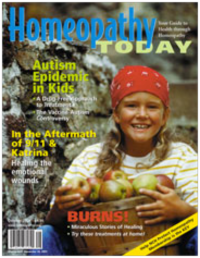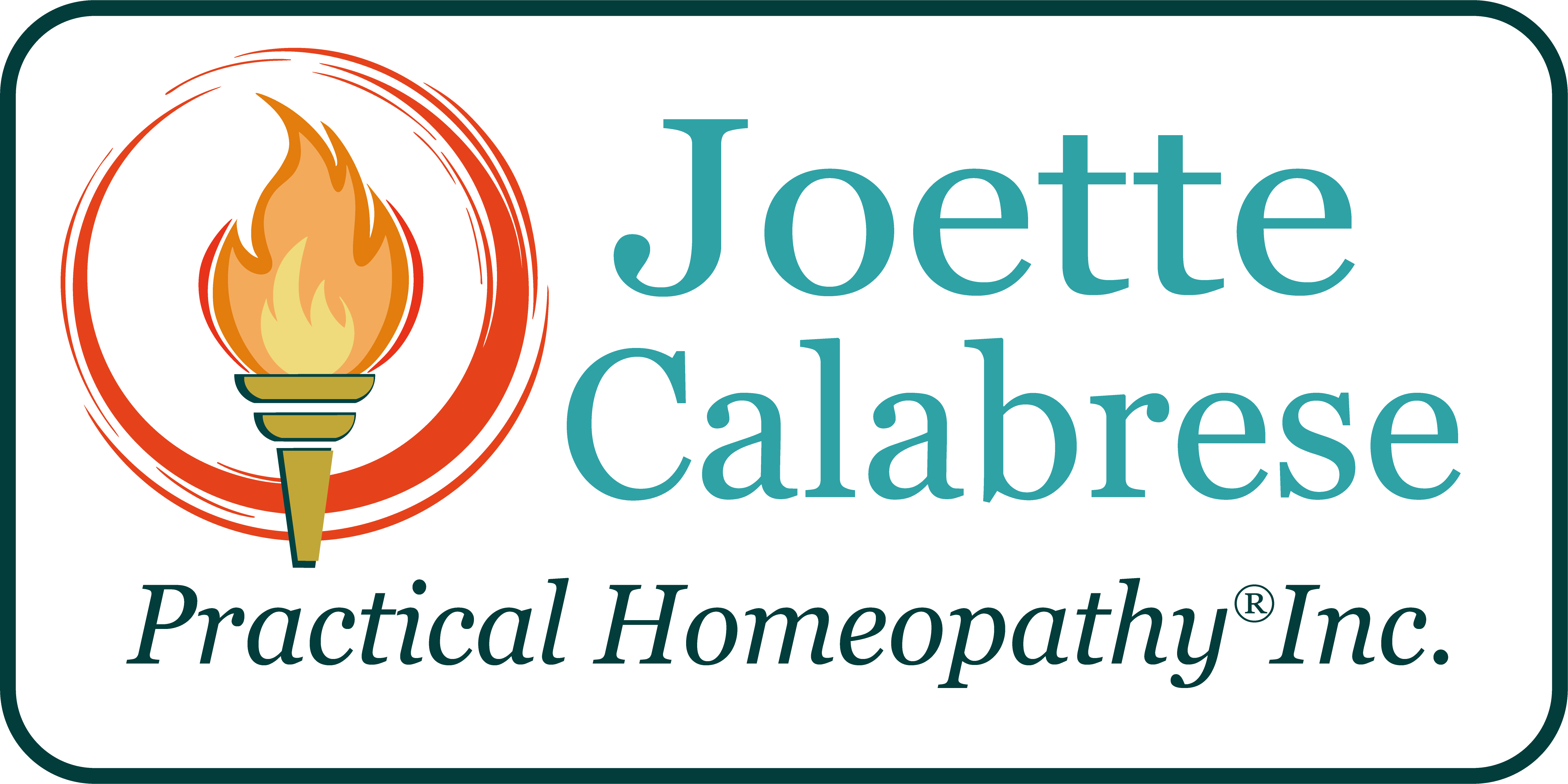Fowl Cholera Epidemic! Homeopathy averts a catastrophe in the flock
Joette Calabrese,HMC,CCH,RSHom
As published in “Homeopathy Today”
 When our family moved to the country some years ago, it seemed a natural decision to raise chickens. So we purchased 30 chicks from a farmer near our western New York home. Up to that point I'd never treated an animal with homeopathy before.
When our family moved to the country some years ago, it seemed a natural decision to raise chickens. So we purchased 30 chicks from a farmer near our western New York home. Up to that point I'd never treated an animal with homeopathy before.
Then, one afternoon at about 1:00, our sons noticed that one of the chickens was “walking funny.” I guess I would have described it as a “rigid gait.” She soon developed violent diarrhea and vomiting and we observed that she was taking frequent sips of water from the trough. By3:00 p.m. she was lying on the ground trembling and salivating. By 4:00 p.m. she was dead.
My first thought was accidental poisoning since our free ranging chickens have been known to go off our property to a neighbor's barn. As this appeared to be an isolated incident, we buried our chicken and kept the flock closer to home. Two days later, however, another chicken began to show the same symptoms. This one appeared cold and trembling from the onset. Still assuming it might have been poisoned, perhaps by arsenic put out by our neighbor to get rid of rats, I gave the chicken the homeopathic remedy Arsenicum album 30c—but with no response. She died so quickly (less than three hours) that I didn't have time to repertorize to find a better remedy choice.
I phoned a veterinarian friend who said it sounded like fowl cholera. Realizing that I needed to take quick action to protect our flock, I looked up fowl cholera in my Chicken Health Handbook by Gail Damerow, and sure enough, the symptoms matched. The book said that it is contagious disease caused by the bacteria, Pasteurella multocida, and that one should expect a 45–55% mortality rate from fowl cholera in a flock, even with the use of the recommended antibiotics. It also said that the surviving birds would often be left with debilitating chronic cholera that would result in the inability to lay eggs.
I prided myself on the health of our chickens, giving them homemade organic mash including flaxseeds and plenty of worms. I certainly didn't want half the flock to die and the others to be chronically ill. Moreover, our hens were not only our egg source but much loved pets.
By the time I got off the phone, our 11-and 6-year-old sons came into the house with two more sick hens … their favorites, Gloria and Gladys! Gloria was lying on her side, salivating, with slight tremors. I knew that meant she could have less than an hour left. Gladys was still at the thirsty stage with diarrhea and vomiting.
Quickly I looked under “Rectum, cholera” in my homeopathic repertory, hoping that fowl cholera was enough like human cholera to require the same remedies.* Cuprum metallicum, Veratrum album, and Camphor were the leading remedies. I didn't bother to read about these different possibilities at that point, as I knew Cuprum metallicum's indications included stiffness of the extremities, which would explain the odd gait the chickens all displayed. I ran to my remedy stock, found Cuprum, opened Gloria's little beak, and inserted two pellets. Gladys got the same.
After administering the remedies, I relaxed slightly and began to research these remedy possibilities further. Then, out of the corner of my eye, I noticed that Gloria was sitting up—just three minutes after she'd gotten the Cuprum. Also, Gladys had stopped vomiting and no longer had diarrhea, so the boys and I just watched and waited. When Gloria began to tremble again and go down on her side, I gave her a second dose of Cuprum.
Within five minutes, she was walking! Gladys' second dose revived her so that she was soon pecking the floor—a good sign for chickens. Gloria received a third dose approximately two hours later when she again appeared to be weakening. This revived her to full chicken activity by the end of the day! Later I gave Cuprum metallicum 30c to the entire flock as a prophylactic measure, in keeping with Hahnemann's method of giving the “genus epidemicus” remedy during epidemics. Because fowl cholera is epidemic, I viewed each chicken as part of the whole community and assumed that they had all contracted cholera, since we have only one watering trough. My sons brought the chickens to me one by one, and I administered the pellets of Cuprum.
In hindsight I realize I could have just as easily put one dose into their water and they all would have ingested it, but at the time, it felt good to treat each one. We watched our chickens carefully for the next two days but there were no relapses or new victims. In scrubbing down the coop, we found the probably source of the infection: a dead wild bird under the hay pile. Fowl cholera usually strikes chickens that have come into contact with an infected wild bird.
It's been seven years since this incident. We have lost many chickens since then, but not one from disease—only from possums, dogs, raccoons, and foxes. Our chickens are healthy and contented. The typical lifespan for the breed we raise (Domique) is 4–9 years, so our chickens are doing quite well. Gloria and Gladys each happily lay a daily egg nearly year round, as does the entire flock. What a powerful reminder of homeopathy's sterling reputation in an epidemic!
* While human cholera and fowl cholera may have similar symptoms, they are different diseases. Human cholera is caused by the bacterium, Vibria cholera, and is typically acquired from ingesting contaminated food or water (rather than from person-to-person contact). It infects the intestines, causing diarrhea, vomiting, and leg cramps. While many human cholera cases are mild, severe cases can lead to dehydration and death.
Joette Calabrese,HMC,CCH,RSHom is certified classical homeopath who teaches and consults with moms the world over via phone and SKYPE. For a FREE download of 10 Toxins and How to Antidote Them With Homeopathy go to the Free Downloads and Articles section of this website. Then, consider scheduling a Consultation with Joette to see if homeopathy is a fit for you or your child's health strategy.


